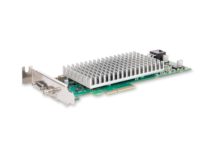Vision & Sensors | Battery
Image Processing in Battery Cell Manufacturing
Machine vision is an elementary part of quality assurance in battery cell production and is used in a variety of production steps.

Image Source: Basler
In the production of battery cells, ensuring high quality during all process steps and reducing material waste is crucial. Digital image processing enables the reliable detection of even the smallest defects. Machine vision solutions help produce safe, high-quality battery cells to meet the challenges of electric mobility.
Different cell types
The main application for lithium-ion battery packs is electric mobility. Though there are three types and formats in use, the functional principle of all types is essentially the same. The main differences are in the design, requirements, and materials used.
RELATED ARTICLES
Pouch cell
The geometry of the pouch cell is almost arbitrary and the size is easily scalable. The free positioning of the cell arresters and the electrode stacking (anode on cathode, divided by a separator) allow good heat dissipation and simple energy management.
Prismatic cell
The prismatic cell also consists of stacked anode and cathode packages. The fixed metal housing provides advantages when assembling the cells into a module. The prismatic cell combines high energy density with safety and a long lifetime.
Cylindrical cell
The cylindrical cell is a proven technology in battery manufacturing. Cylindrical cells consist of an anode and a cathode isolated by a separator and wound into a roll. The round design results in a loss of space at the battery pack module level.

Battery cell manufacturing involves four main process steps
Lithium-ion battery cell production consists of four main process steps: electrode production, cell assembly, cell finishing, and battery pack assembly. The electrode production and cell finishing process steps are largely independent of the battery cell type, while cell assembly distinguishes between pouch or prismatic cells and cylindrical cells. Regardless of the cell type, the smallest unit of any lithium-ion cell consists of two electrodes and the separator that divides them from one another. In between is the ion-conducting electrolyte.
Where is vision used in battery cell manufacturing?
Machine vision is an elementary part of quality assurance in battery cell production and is used in a variety of production steps.
Anomaly detection
Optical anomaly detection compares the condition of materials or components to a pre-defined target condition and locates possible deviations.
Object detection and classification
Image analysis detects and categorizes defects and irregularities. This allows systems to be adjusted and provides a basis for deciding whether the material is within tolerances or must be rejected.
Measuring defects
Once defects or contaminants have been detected and localized, they can be measured. This allows conclusions to be drawn about the type and extent of the defect.
Code reading
Barcodes, QR codes, PDF417 codes, data matrix codes, or Aztec codes: materials and semi-finished products are marked with codes for tracking during process steps or for faster handling in the material flow.
Use cases in battery cell manufacturing
Coating the substrate foil with slurry is a critical production step. The surface quality must be uniform, free of voids and particles, and the thickness of the slurry must be precise and homogeneous.
Electrode coating in detail
In electrode coating, the carrier or substrate foil is coated with the previously mixed slurry using an application tool such as a slot die, doctor blade, or anilox roller. The top and bottom sides of the foil can be coated in parallel or sequentially. This is followed by a drying process.
This process step is particularly critical because many parameters must be precisely coordinated: the slurry must have the required stability and be applied at the correct rate. The aim is to achieve perfect coating homogeneity, without cracks or agglomerates, as the electrode layer is particularly important for battery performance.
However, many defects can occur in both intermittent and continuous electrode coating. Typical defects include agglomerates, coating cracks, contamination from foreign bodies and micro-compressions that occur when the coating is applied too thinly. Mud cracks, pinholes and breakouts at the end of the coating web are also possible defects.

The challenge of large image data
Image processing during production presents a dual challenge. Very high production speeds generate large amounts of image data. At the same time, a high level of detail is required (which is achieved through high image resolution), generating even larger amounts of data. Conventional solutions generally do not have the processing power required to maintain the required production speeds.
Advanced image processing technology on the other hand ensures reliable quality control during electrode coating. Highly sensitive line scan cameras are suitable for continuous material and deliver the necessary throughput and the required image quality. But with the use of targeted image pre-processing, only a fraction of the data volume needs to be analyzed. A combination of software and a frame grabber pre-processes the image data and thus creates the necessary focusing for the actual image processing. By determining the ROI (region of interest), only the areas with irregularities are localized first. Only the image data of the ROI is then viewed and further processed.
This has the advantage that the CPU of the IPC can continue to be used for the actual system control without any additional load. In the next step, the irregularities within the ROIs can be further analyzed. Specialized software for image analysis can, for example, classify the type of defect or measure the size of the defect. Depending on the type and size of the defect, a decision is made as to whether it is within the tolerances or whether further measures are required. Defective areas can be precisely cut out thanks to exact localization and measurement. This improves the quality of the battery cell and minimizes material waste.
Looking for a reprint of this article?
From high-res PDFs to custom plaques, order your copy today!






